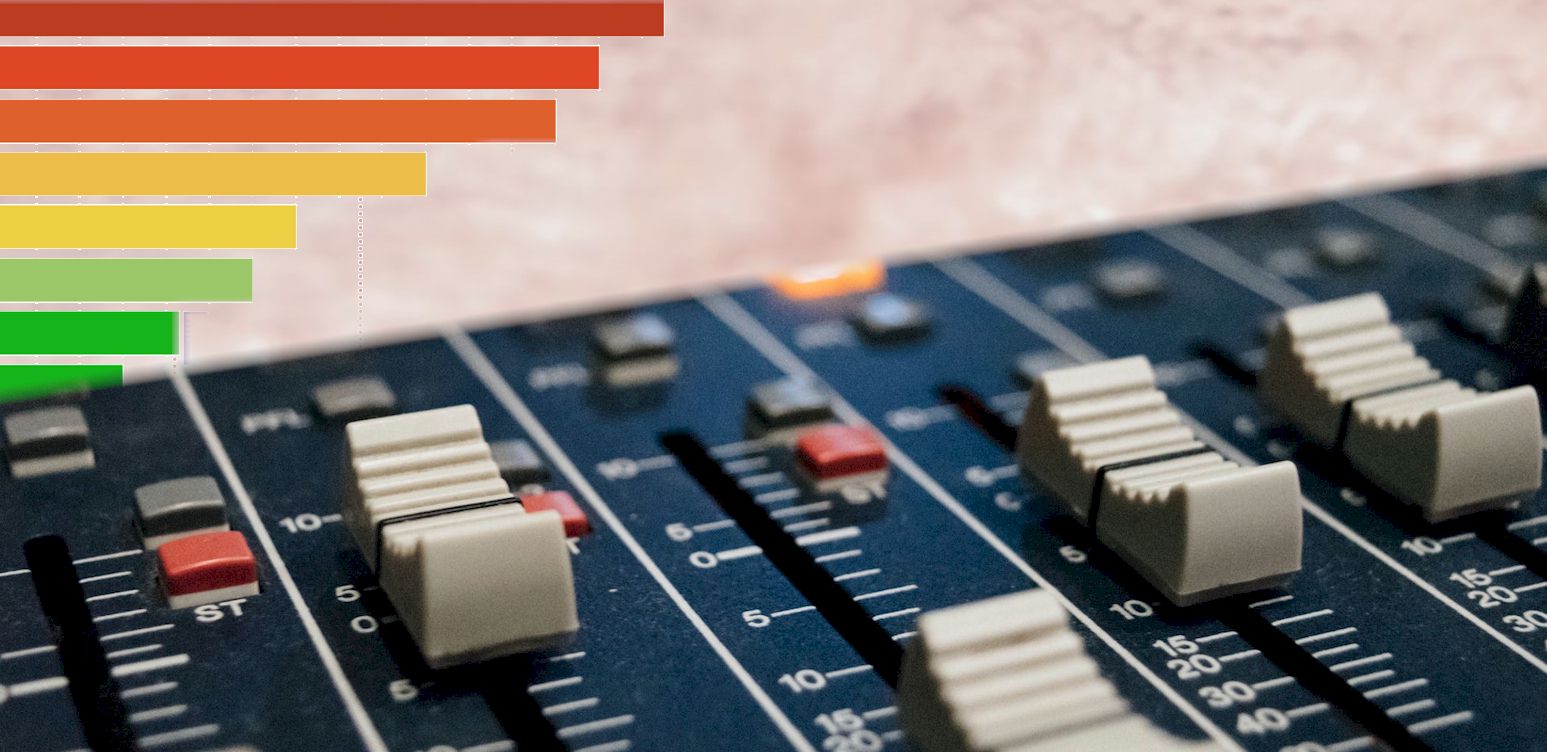As a music producer, you know how vital mixing is to get that professional sound quality. One important aspect of mixing is, keeping the volume or loudness in check. You have to keep the sounds loud enough to hear all the parts of the music. Also, if the loudness is too much, you will get all sorts of noise and distortions.
Now, if you are wondering what could be the best dB level for mixing, I have got you covered. Here, I will tell you all you need to know about dB levels for the best mixing results in your music production.
So, let's not waste any more time and get started with it.
Contents
What does dB mean in mixing?
For anyone who doesn't have any idea about dB, it's essential to know this part. dB is the short form for decibels. This is a unit for loudness or what we commonly know as volume.
The question is, how does that translate to mixing in music? As you may know, mixing is the process where you bring all the different recordings into one track.
For example, when you compose a song, there are different tracks, such as vocals, guitars, drums, piano, or other instruments. Mixing is when you make a unison in all these tracks and bring them together in a single way.
While doing that, you don't want a particular track to be louder than the other one. Because that will make that sound a bit overpowering in a final way, and you lose that balance from your music.
Also, dB plays a huge role in the output of your mixing. You want the final track to be at a certain level which is an industry standard. You get the same dB level in mixing all commercially released songs. In simple words, the final track of every commercial song has the same loudness.
Related: bass boost frequency
What dB should you mix at? The best dB level for mixing
When it comes to mixing, the perfect dB is considered to be -6dB. Most professional engineers and producers use it to be the ideal dB for mixing. Essentially, it gives proper headroom for your sounds that can help in the later steps of music production, which are mastering.
If you don't have enough headroom in your mixing, you will end up with distorted audio. Distortion is something that you would want to avoid at all costs in your music.
Keeping all your music elements at -6dB on the master level gives them the chance to interact with each other. You don't end up getting an overpowering component in your music this way. Remember, the dB we are talking about is of the master audio, not the individual tracks.
There are lots of benefits that you get from mixing at -6dB. Let's check them out one by one.
- Particularly in the -6dB point, you get a balance of the sounds and flat response. Flat response is the essential part of audio editing, engineering, mixing, and mastering. This means you get a balance of both the higher frequencies and the lower frequencies.
- Going for the -6dB allows you to have much more headroom. This gives the mastering engineer to work with the music even further. Because every effect you add in the mastering step will increase the volume of the audio. So, the -6dB mark allows the mastering engineer to add and try out different effects to enrich the music.
- With this loudness level, you get reduced frequencies that usually resonate. That helps a lot in the mixing stage as well as the mastering stage.
- The best advantage of using this level is the elimination of distortion. Your sounds will not distort at this level and yet have balance throughout all frequencies.
- You get much more clarity at the -6dB level because of the space created in the mixing process. It makes the sounds crunchier, and you get to hear all the tracks.
- In the mastering stage, you don't need to think about gaining staging at all when you mix at -6dB.
As you can already there are lots of reasons why you should be mixing at -6dB. No other level can provide you with the same results. This makes -6dB the best level for mixing your music. How loud should my volume be when mixing?
Now, this is the loudness you should have on your monitors or speakers when mixing. Just consider this the speaker volume when you are mixing your music. Should you take it all the way? Well, the answer is no.
Related: organize music library
In general, a good benchmark for the speaker or monitor volume while mixing is 85dB. Considering you have a professional setup, this is the volume level you should be working with. But if you have a smaller room, for example, your bedroom, you have to get it lower.
Having said that, how do you the perfect loudness of your room? It's pretty simple to find that out. First of all, you should start with the 85dB volume level. Then, play your audio and keep lowering the volume level.
You have to lower it until it reaches the point where you can have a conversation without you having to raise your voice. This means you have to speak the way you usually talk with the same volume and see if you can have this conversation.
Keep lowering the volume until you reach a point where you can have a conversation without the music cutting you out.
Related: What is 3D audio used for
Last words
To sum up, it's essential to know the best dB level for mixing. It gives you better results, but it also makes the other stages of music production much easier. While there are all sorts of standard numbers, you can't be restricted to those numbers.
Music isn't restricted at all. A lot of factors can affect the numbers, and you have to figure that out by listening to them. The equipment you use, the room you are in, the software you use, your recording conditions all impact the outcome.
So, rather than sticking to those numbers strictly, use them as a guiding point and then move around based on the sound and feel you get.

Graduated with a Bachelor of Audio Engineering and Sound Production. He has worked with a number of studios as a Recording Engineer, with over 10 years of servicing experience in both re-recording mixing and sound editing.

